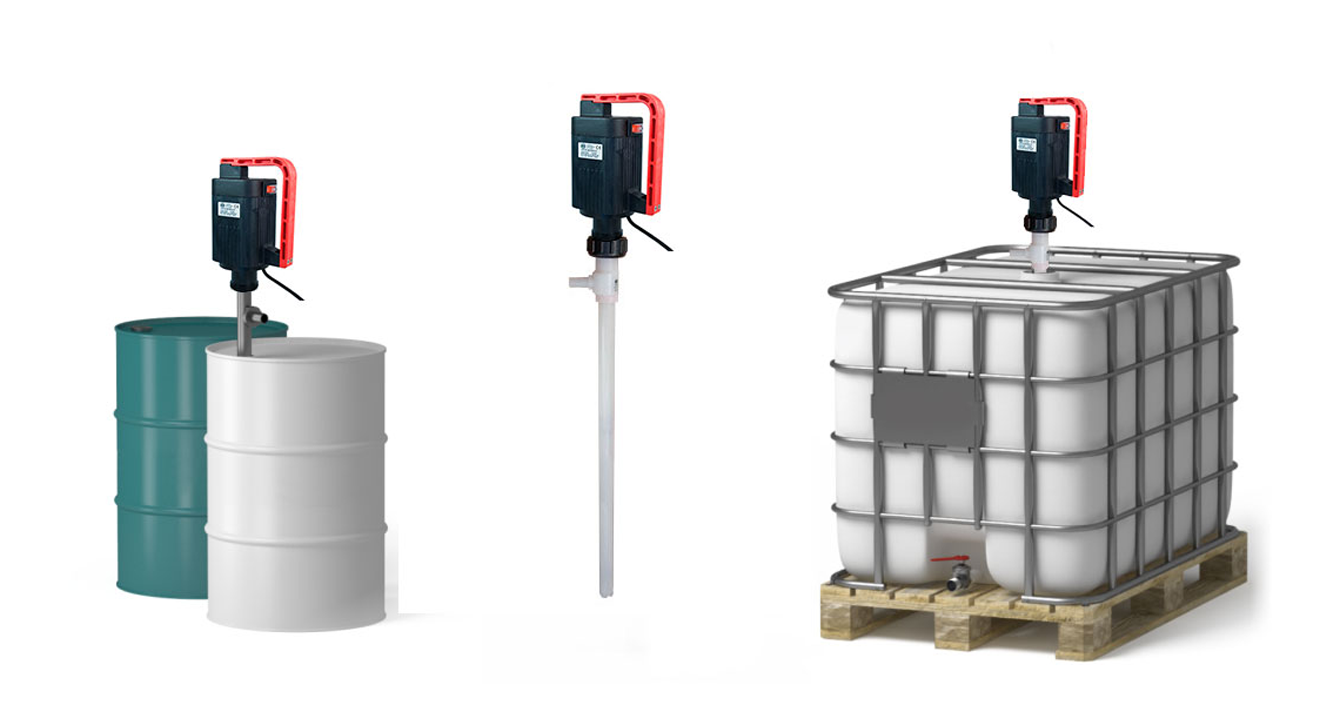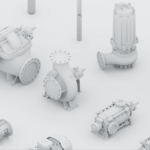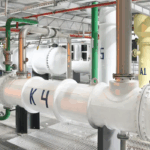The barrel pump consists of a submersible part (tube), a motor (electric, pneumatic or manual drive) and a nozzle for connection to the barrel.
The principle of operation depends on the type of pump:
- Centrifugal barrel pumps: They use an impeller to create a centrifugal force that transports the liquid.
- Diaphragm barrel pumps: The liquid is pumped through the reciprocating motion of the membrane, which creates pressure.
- Gear drum pumps: They are used to work with viscous liquids, moving them with the help of gears.
Main areas of application
- Chemical industry: Pumping acids, alkalis, solvents and other aggressive liquids.
- Food industry: Working with oils, syrups, sauces, and dairy products.
- Pharmaceutical industry: Transportation of sterile solutions, concentrates and other liquids.
- Cosmetics industry: Pumping creams, shampoos, and lotions.
- Oil and gas industry: Pumping oils, fuels, and lubricants.
- Water purification: Pumping reagents and disinfectants.
Features of barrel pumps
- Versatility:
They can handle a wide range of products, from watery to viscous, including chemically active substances. - Materials of execution:
- Stainless steel for aggressive environments.
- Polypropylene or PVDF for chemically active liquids.
- Aluminum for working with fuel products.
- Ease of use:
Easy installation in a barrel or canister, the ability to quickly change the place of work. - Security:
Some models are equipped with explosion-proof motors for use in hazardous environments. - Reason:
- Electric: High performance, suitable for continuous work.
- Pneumatic: It is used in hazardous areas.
- Manual: An economical option for small volumes of liquids.
How to choose a barrel pump?
- Fluid characteristics:
Take into account the viscosity, chemical composition, and temperature of the working medium. - Materials of execution:
Select a pump made of materials that are suitable for the fluid to be transported. - Productivity:
Determine the required pumping volume per unit of time. - The length of the tube:
Choose a model with the right length for your container type (barrels, canisters, etc.). - Type of drive:
Choose from electric, pneumatic, or manual depending on the working conditions.

























































